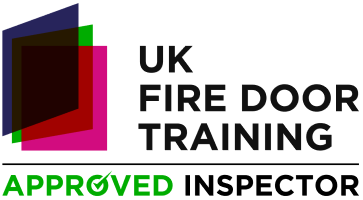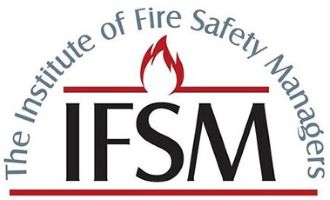News
Fire Door Safety week - Monday 23rd October to Friday 27th September
Every year, Fire Door Safety Week raises awareness and helps save lives. Fire doors that are ill-fitted, damaged or poorly maintained will not provide adequate protection for all building users. All premises must be equipped with fire doors that are fit for purpose.
Building owners, employers and operators have a responsibility under the Regulatory Reform (Fire Safety) Order 2005 (FSO) to ensure that their properties are safe.
It’s crucial to understand the factors that ensure a fire door performs as intended – product manufacture, quality, installation and maintenance all play a part. Their correct specification, maintenance and management can be the difference between life and death for building occupants, as can their use. Propping a fire door open means that they won’t perform as they should in the event of a fire.
Why do fire doors need inspection?
Fire door inspections should be conducted by competent individuals with the knowledge and expertise to assess the condition and functionality of fire doors. Inspections typically cover aspects such as the door, frame, hardware, seals, and associated components. The frequency of inspections may vary based on factors like the type of building and the level of use, but they should be conducted at regular intervals to ensure ongoing fire safety of the premises is not compromised.
- Legal Requirement: Fire door inspections are a legal requirement under the Regulatory Reform (Fire Safety) Order 2005 in the UK. This legislation places a duty on the responsible person for a non-domestic premises to ensure that fire safety measures, including fire doors, are properly maintained.
- Life Safety: Fire doors are a critical component of a building's passive fire protection system. They are designed to prevent the spread of fire and smoke, allowing occupants to escape safely during a fire. Regular inspections help ensure that fire doors are in good working condition and can perform their intended function.
- Fire Compartmentation: Fire doors are used to create fire compartments within a building. These compartments help contain a fire in one area, limiting its spread to other parts of the building. Inspecting fire doors ensures the integrity of these fire compartments.
- Preventing Smoke Spread: Fire doors are also essential for preventing the spread of smoke, which can be just as deadly as the fire itself. Properly functioning fire doors help maintain smoke barriers, allowing people to evacuate more safely.
- Property Protection: Fire doors not only protect lives but also help safeguard property and assets within a building. By preventing or slowing down the spread of fire, they can reduce damage to the structure and its contents.
- Compliance with Standards: Fire doors should comply with British and European standards to ensure their effectiveness. Regular inspections help ensure that fire doors meet these standards and are in good working order.
- Identifying Defects: Fire door inspections help identify defects, damage, wear and tear, or any alterations that may compromise the door's fire-resistance properties. Early detection of issues allows for timely repairs or replacements.
- Maintaining Certification: Fire doors are typically certified and tested to specific standards. Regular inspections help ensure that the doors remain in compliance with their original certification and any subsequent maintenance requirements.
- Peace of Mind: Regular fire door inspections provide peace of mind to building owners, responsible persons, and occupants. It demonstrates a commitment to fire safety and reduces the risk of non-compliance, potential legal liabilities, and insurance issues.
- Cost Savings: Proactive maintenance and inspection of fire doors can be more cost-effective than reactive repairs or replacements. Timely identification and rectification of issues can save money in the long run.
Why do staff need to be trained in fire safety and as fire wardens?
By training staff as fire wardens, organisations can enhance their overall fire safety preparedness and response. It helps protect the lives of employees and visitors, reduce property damage, and demonstrate a commitment to fire safety compliance and best practices. Fire warden training ensures that designated individuals are prepared to handle fire-related incidents effectively and efficiently.
- Legal Requirement: The Regulatory Reform (Fire Safety) Order 2005 mandates that employers designate and provide training for employees to act as fire wardens (or fire marshals) in the workplace. Failure to comply with this legal requirement can result in legal consequences.
- Emergency Response: Fire wardens play a crucial role in assisting with the safe evacuation of employees and visitors during a fire or other emergency. They help ensure that everyone exits the building promptly and safely.
- Fire Prevention: Fire wardens are trained to identify and address fire hazards and risks in the workplace. They can take proactive measures to prevent fires from occurring or spreading.
- Fire Equipment Operation: Fire wardens are trained to use firefighting equipment, such as fire extinguishers and fire blankets, to tackle small fires in their early stages. This can help prevent small fires from escalating into major emergencies.
- Communication: Fire wardens are responsible for communicating fire-related information to building occupants. This includes raising the alarm, providing clear and calm instructions, and guiding people to safe evacuation routes.
- Accountability: Designating and training fire wardens establishes clear accountability for fire safety within the organisation. It ensures that individuals are responsible for specific fire safety duties and are knowledgeable about the procedures to follow.
- Assistance to Vulnerable Occupants: Fire wardens are often responsible for assisting individuals with special needs or disabilities in evacuating the building. Training ensures they can do so effectively and safely.
- Reducing Panic: Trained fire wardens can help reduce panic and confusion during a fire evacuation. Their presence and guidance provide reassurance to occupants and can contribute to a more orderly and efficient evacuation.
- Reporting and Documentation: Fire wardens may be responsible for reporting incidents, conducting fire drills, and maintaining records related to fire safety. Training equips them with the knowledge and skills to fulfill these responsibilities.
- Emergency Plans and Procedures: Fire wardens are well-versed in the organisation's emergency plans and procedures. This includes understanding the fire alarm system, evacuation routes, assembly points, and the roles and responsibilities of other fire safety personnel.
- Regular Drills and Practice: Fire wardens can assist in organising and participating in fire drills, which are essential for ensuring that employees are familiar with the evacuation procedures and that they can evacuate quickly and safely during a real emergency.
- First Aid: In some cases, fire wardens are trained in basic first aid techniques to provide initial assistance to those who may be injured during an evacuation.
Why do i need a fire risk assessment?
A fire risk assessment is a legal requirement for almost all non-domestic premises, including workplaces, public buildings, and multi-occupancy residential buildings. Here are the primary reasons why a fire risk assessment is required:
- Legal Requirement: The Regulatory Reform (Fire Safety) Order 2005 places a legal duty on the responsible person for a non-domestic premises and comunal areas of multi-occupancy domestic premises to carry out a fire risk assessment. The responsible person can be the building owner, employer, occupier, or anyone who has control over the premises, such as a managing agent. Failure to comply with this legal requirement can result in legal consequences, including fines or imprisonment.
- Life Safety: The primary purpose of a fire risk assessment is to ensure the safety of people within the premises. It helps identify and mitigate fire hazards, assess the risidual risks and establish measures to protect the safety of occupants in the event of a fire. This includes the safe evacuation of all individuals, particularly vulnerable persons.
- Property Protection: Fire risk assessments also help protect property, assets, and business continuity. By identifying potential fire hazards and implementing preventive measures, you will significantly reduce the risk of a fire affecting your building, damaging contents and equipment or even resulting in the premises having to close.
- Liability and Insurance: Compliance with fire safety regulations, including conducting a fire risk assessment, is a requirement for insurance policies and maintining adequate cover. In the event of a fire, failure to meet these requirements could lead to insurance claims being refused.
- Employee and Public Confidence: Demonstrating that you take fire safety seriously by conducting a fire risk assessment can boost employee and public confidence. It demonstrates a commitment to occupant safety and well-being.
- Legal Defense: In case of a fire-related incident and subsequent investigation, having a documented fire risk assessment can serve as evidence that you took reasonable steps to identify the fire hazards and put measures in place to protect people and property.
- Continuous Improvement: A fire risk assessment is not a one-time exercise but an ongoing process. It helps you identify areas for improvement and ensures that fire safety measures are regularly reviewed, updated and will account for any changes to your premises and its operation.
- Compliance with Best Practices: Fire risk assessments are based on industry best practices and nationally recognised standards in fire safety. Following these practices can help you create a much safer environment within your premises and an overall higher standard in fire safety.





